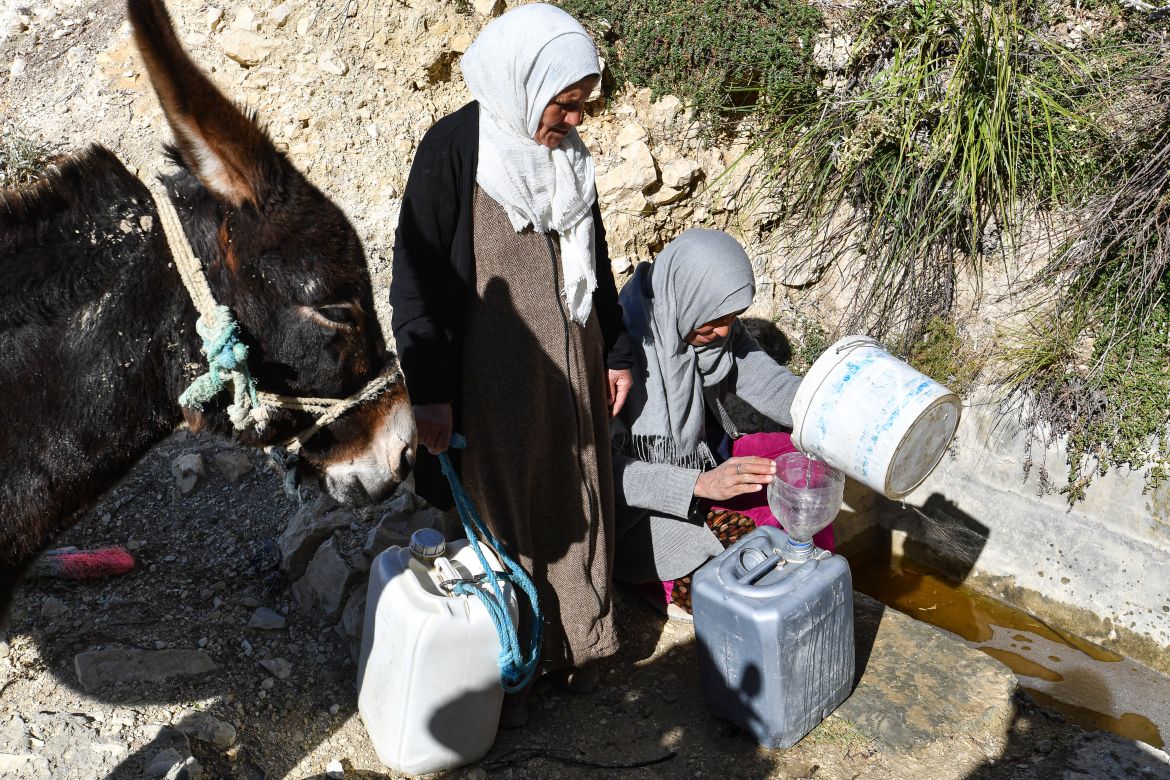In Pictures
‘We are the living dead’: Drought-hit Tunisian villages battle isolation
Tunisian dams are filled at just 22 percent capacity and some 20 dams have already gone out of service.

Tunisian villager Ounissa Mazhoud ties two empty jerry cans to a donkey and cautiously descends a stony hill towards the last local source of water.
The North African country, in its fourth year of drought, is grappling with its worst water scarcity in years.
Mazhoud – like other women in the remote village of Ouled Omar, 180km (110 miles) southwest of the capital, Tunis – wakes up every morning with one thing on her mind: finding water.
“We are the living dead … forgotten by everyone,” said Mazhoud, 57, whose region was once one of Tunisia’s most fertile, known for its wheat fields and Aleppo pines.
“We have no roads, no water, no aid, no decent housing, and we own nothing,” she said, adding that the closest source of water is a river about an hour’s arduous walk away.
Providing water for their families, she said, means that “our backs, heads and knees hurt, because we labour from dawn to dusk”.
Some villagers have felt pushed to move to urban areas or abroad.
Ounissa’s cousin, Djamila Mazhoud, 60, said her son and two daughters had all left in search of better lives.
“We educated our children so that when we grow old, they take care of us, but they couldn’t,” she said.
“People are either unemployed or eaten by the fish in the sea,” she added, using a common phrase for migrants who attempt the dangerous sea voyages for Europe.
Entire families have already left the village, said Djamila.
“Their houses remain empty,” she said, explaining that elderly people feel they have no choice but to follow their sons and daughters.
“Can an 80-year-old go to the river to get water?”










